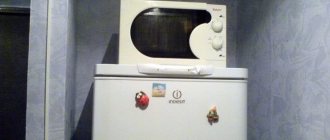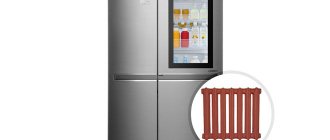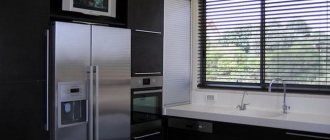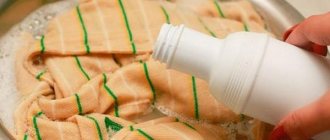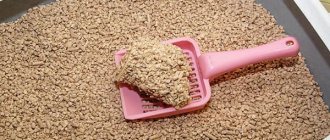7 reasons why you can’t put hot food in the refrigerator. Is it possible to put hot food in refrigerators with the No Frost system? In what cases can you put hot food in the refrigerator?
Mom often pulled me back when I was about to put a hot pot of soup on one of the shelves in the refrigerator. To my question: “Why?” - she answered briefly: “Harmful.” For me, this ban was one of the inexplicable. I didn’t know what could be so bad about it, but I didn’t do it just in case.
As it turns out, there are at least 7 reasons why you should absolutely not put hot food in the refrigerator. But there are also exceptions. All this will be discussed.
A little physics
The principle of operation of a refrigerator is as follows - it does not produce cold, but takes away heat. That is, by cooling the internal space, it takes away its thermal energy. And it transmits it through the radiator on the rear wall.
If you put warm or hot food in the refrigerator, the amount of heat in the refrigerator increases dramatically. Accordingly, it needs to be taken out of the chamber and moved outside. And this increases the load on him.
Whether you can put hot food in the refrigerator depends on the situation. If it is necessary, then yes. But putting hot food in the refrigerator means harming not only it. We will talk about this below. Read carefully and do not make mistakes !
Possibility of solving the problem
Only food at room temperature or colder can be placed in the refrigerator. Therefore, in most cases, it is enough to simply let the dish sit on the stove for a while after the fire is turned off. It will take about 2 hours to cool, after which you can safely put the lukewarm soup in the refrigerator.
Some foods do not need to be put in the refrigerator at all, since at room temperature they will not spoil even within a whole day. Therefore, you can put a plate of potatoes in the refrigerator after returning from work if you don’t have time to wait for natural cooling.
If you need to speed up the cooling process, you should use other options instead of a refrigerator:
- a bowl of ice where a container of food is placed to cool;
- a wet towel in which to “wrap” the pan;
- Ice cutlery (spoons and forks) will help cool the liquid.
Hot tea or other drinks can be cooled down with a couple of ice cubes. Another common method is simply adding cold water to the mug. You just need to boil it in advance and cool it. A carafe of water will always be ready.
It is worth giving up the habit of cooling everything in the refrigerator. Even if this does not happen too often, the refrigerator will overheat. As a result, the desire to cool the dish as quickly as possible will result in the cost of repairs or a new refrigerator.
HOT IN THE FRIDGE: IS IT POSSIBLE OR NOT?
Watch this video on YouTube
Watch this video on YouTube
Do you want to understand better than others?
- What to cook with what's in the refrigerator? - No more worrying about what to cook. Novice chefs will find it useful to have websites and applications for mobile phones that select dishes from what is available in…
- Reasons for heating the refrigerator compressor - It’s hard to imagine home life without a refrigerator, since even a small downtime for 3-12 hours can lead to food spoilage. Therefore usually...
- How to prepare honey mushrooms in the freezer for further cooking - Strong honey mushrooms are suitable for long-term storage in the freezer. Since mushrooms are suitable for freezing even after heat treatment, the possibilities of their use are significantly…
- Is it possible to place a refrigerator next to an electric or gas stove - Having a small space in the kitchen, owners spend a long time thinking about how best to place household appliances. Some are forced to place the refrigerator next to the stove (gas,…
- Can a microwave be placed on a refrigerator? - The optimal solution for the location of a microwave is to install the equipment on the refrigerator, freezer or hang it. This approach allows you to rationally use...
Overconsumption of electricity
Any refrigerator has a built-in temperature sensor. It affects the frequency of switching on and the intensity of operation of the compressor. When you put hot or warm food in the refrigerator, the temperature in the refrigerator rises sharply. And he is forced to work more intensively.
For refrigerators with an inverter-type compressor, the operating speed of the latter increases. For ordinary ones, it starts working continuously. Due to this, the energy consumption of the refrigerator increases. Let's look at this with a simple example:
Example
You put a 3-liter pot of hot soup in the refrigerator at a temperature of +90 degrees. To cool it to +5, it is necessary to “take away” 255 kilocalories of thermal energy. This is the equivalent of 0.296 kW.
The COP of modern climate control equipment is 3-4 units. That is, the refrigerator will consume 74-99 watts more electricity.
In principle, not such a large amount of electricity needs to be spent. But if you constantly put hot food in the refrigerator, a significant amount can come out in a month.
Are there any exceptions
Owners of household appliances believe that it is possible to put still warm dishes in the refrigerator. And the instructions are only a recommendation, not a requirement. Therefore, many manufacturers have improved their devices and now supply units that are more tailored to the needs of people. The technology has become less susceptible to sudden temperature changes. Therefore, the risk of equipment failure is lower for the following models:
- No Frost;
- Westfrost;
- Hornbeam.
The technical characteristics of devices with such stickers make it possible to exclude the recommendation about hot dishes from the instructions. In such models, several compartments are installed for different products. In addition to the standard freezer and refrigerator, there are “cases” for cooling alcohol and closed boxes where you can leave hot broths. Vegetables and fruits are stored separately from other products. The more specialized compartments, the more reliable and adaptable the refrigerator to different conditions.
In closed boxes, the cooling element does not remove excess heat to the outside. Thanks to this, there is no risk of ice crust formation. But the temperature in other compartments of the refrigerator does not change at all. But the process of cooling a freshly cooked dish is not so fast.
Important! But it is still not recommended to constantly experiment. There is a big difference between a plate of warm soup and a 10-liter pan of jellied meat that has just been on the stove. The higher the temperature of the food and the larger its volume, the worse the equipment tolerates it.
It is prohibited to put hot items into Soviet-style refrigerators, as well as devices with a drip cooling system. They do not have temperature separation like modern refrigerators. And the freezing element is often covered with ice and snow even when used correctly. If you periodically place mugs of boiling water, then within a few hours part of the refrigerator will become covered with ice and snow, which can only be removed when defrosting. Too frequent defrosting reduces the service life of the equipment.
Rapid wear
The heart of the refrigerator is the compressor (some call it the motor). This is its most important and expensive element. In inverter refrigerators it works constantly, but at a low speed. In non-inverter ones, it periodically turns on and off. This is necessary to maintain the desired temperature.
When the temperature in the refrigerator compartment rises due to hot food, the compressor begins to work with greater intensity . Depending on the type of refrigerator and compressor power, this can last from 1 to 3 hours.
At this time, the compressor is subject to increased load. Accordingly, it wears out faster, which can significantly affect its service life. For example, if the compressor of a conventional refrigerator runs continuously for an hour, this will reduce its overall operating life by 6-8 hours .
In addition, the following can happen due to a sharp increase in load:
- The light bulb will burn out;
- Due to the elevated temperature, the freon line may break;
- In No Frost systems, fans may fail;
- Due to freon overheating, the refrigerator will consume a lot of electricity, but will not cool food well.
At what temperature should food be stored?
All requirements for the shelf life and storage conditions of food are specified in SanPiN. GOST standards speak separately about the storage of various seafood.
- Bakery products - 5-6 °C
- Sauces – 3-7 °C
- Fruits – 5-8 °C
- Vegetables – 4-7 °C
- Dairy products - 4 °C
- Cooked foods - 2–5 °C
- Confectionery - 1–3 °C
- Eggs - 2–5 °C
- Sausages - 0-8 °C
- Chilled meat - 1–3 °C
- Chilled fish and seafood - 0–2 °C
- Cheeses - 0-4 °C
- Frozen meat - -14 to -18 °C
- Frozen fish - -18 °C
- Frozen vegetable and fruit crops - -18 °C
What about the warranty?
Many manufacturers of refrigeration equipment indicate in the instructions the maximum temperature of products that can be placed in it . If you have a habit of putting hot food in the refrigerator, then the risk of damage is high. If this happens, and the device is under warranty, problems may arise.
Specialists at the warranty center will most likely determine that the refrigerator was operating under increased load. There are two possible reasons:
- Constantly open refrigerator door;
- Placing hot foods into the chamber.
In both cases, you will be denied warranty repairs. In addition, the refrigerator will be removed from the warranty altogether. If you have to deal with replacing a light bulb, it doesn't cost that much. But if the compressor fails, replacing it can cost half the cost of the refrigerator
Danger of damage
Modern refrigerators have shelves made of glass with plastic trim. And all the side compartments and walls are made of plastic.
When you place a hot pan on a glass shelf, there is a risk that it will crack due to temperature changes. If hot dishes touch the plastic, it may become deformed. Budget class refrigerators are especially guilty of this.
In both cases, you are unlikely to receive repairs under warranty. It is better not to contact the warranty center at all, as your equipment may be completely removed from the warranty.
Fur coat on the walls
If you place an uncovered container of hot food in the refrigerator, water will evaporate rapidly from it. It will settle on the back wall and freeze . A so-called “fur coat” will appear – ice on the wall.
Because of such a fur coat, the refrigerator begins to absorb heat worse. Accordingly, energy consumption and equipment wear will increase. In addition, you will have to defrost the refrigerator periodically.
Ice coat on the back wall of the refrigerator
How does a refrigerator work?
The main cooling element of the refrigerator is freon. This is a liquid with a low boiling point, from 20 to 40 degrees. Freon begins to boil as the pressure decreases. To do this, it is passed through a system of long thin tubes located inside the walls of the refrigerator. When freon boils, it absorbs the surrounding heat, so the air inside the refrigerator cools.
The cooling system in the refrigerator consists of freon pipes, a compressor and a radiator grille
Products with odor
Will food spoil if you put hot food in the refrigerator? This is a controversial issue. If your unit has good power and a lot of products are stored in it, then it’s unlikely. But if the refrigerator is low-power and you don’t store much food in it, then most likely yes.
The fact is that hot food quickly releases heat. A low-power refrigerator will not be able to cool it quickly, and the thermal energy will be transferred to other products. If there are a lot of them in the refrigerator, they will warm up by 1-2 degrees, which is not so bad. But if the chamber is half empty, then the temperature of the products will rise by 5-10 degrees, which can lead to their spoilage .
In addition, many foods lose their taste if they are placed in the refrigerator while hot. This is especially true for powerful models and quick freezing systems. And plastic utensils can release substances that not only spoil the taste of food, but can be harmful to health.
Such temperature changes have a great influence on light weight products. For example - greens. By the way, we recommend reading an article about how to keep greens fresh in the refrigerator longer. But you can only do this if you don’t put hot food in the refrigerator .
Physical Features
A refrigerator is a thermally insulated chamber, the principle of which is to maintain a low temperature level by transferring thermal energy outside. Those. not the production of “frost”, but the selection of heated air and its release using a radiator installed on the rear panel.
- Therefore, if you place a dish with a hot dish in the refrigerator compartment, this will not only lead to the fact that the cooled glass shelf may crack due to temperature changes.
- It will also significantly increase the amount of heat that needs to be removed from the closed compartment and moved out of the refrigerator. A natural consequence will be an increase in the load on the operation of the unit.
Whether it is worth placing uncooled food in the refrigerator - this largely depends on the knowledge and needs of the user, on the situation and on the specific model of the device. There are times when you simply need to refrigerate food or drinks immediately. Do not forget that such situations can damage household appliances.
Is it possible to put hot food in a No Frost refrigerator?
No Frost refrigerators are different from regular ones. In traditional models, the cooling circuit is located directly in the rear wall. In models with the No Frost system, there is space between the back wall and the circuit, and cooled air is removed from it using fans.
Otherwise, the operating principle of the refrigerators of both systems is the same. Therefore, if you put hot food in the chamber, the consequences will be the same. The only difference is that in No Frost refrigerators an ice coat will not form on the back wall .
The operating principle of a refrigerator with a No Frost system.
When can you put hot food in the refrigerator?
Some refrigerator models can actually accommodate hot food. But only if they have sealed chambers for hot dishes or compartments for quick freezing.
Chambers for hot dishes protect the main compartment from hot air entering it. Due to this, negative effects can be avoided. But there will be excess energy consumption, albeit small.
Quick freezers cool hot food quickly. In this case, warm air does not spread throughout the entire refrigerator compartment. But at the same time, the compressor will work faster, which will lead to its wear and increased energy consumption .
What to do if you need to quickly cool food?
It happens that food still needs to be cooled quickly. There is a much more effective way than just putting it in the refrigerator. To do this, you must always keep 2-3 kilograms of ice in the freezer.
For example, you need to cool a pot of soup in order to put it in the refrigerator. To do this, do the following:
- Take a large container, for example a basin;
- Line the bottom with ice;
- Place a saucepan in it without a lid and add ice around the edges;
- Fill the container with cold water;
- Take everything out into the fresh air, preferably in the wind;
- As the ice melts and the water warms up, change it to cold.
When the food temperature drops to 30-40 degrees, you can safely put it in the refrigerator. It won't cause any significant problems.
How can you cool tea quickly?
Blow on the drink and stir it with a teaspoon. This will cool
the entire volume of the drink with cool air.
Continue until the drink has cooled to the desired temperature. Although it's a little tedious to stir and blow all the time, it's one of the most effective ways to cool
a hot drink.
Interesting materials:
How to set up Viber video call? How to customize the folder view? How to set up 360 video on Android? How to set up incoming calls on MI Band 4? How to set flash for notifications? How to set up a second call on Huawei? How to set up a second line on Samsung? How to set up input? How to adjust shutter speed on a Canon camera? How to set up wi-fi on MacBook?
Let's sum it up
Let's look at the main reasons why you should not put hot food in the refrigerator:
- Increased electricity consumption;
- Risk of breakdowns due to increased load;
- Rapid wear of the refrigerator compressor;
- Risk of damage to shelves and walls;
- Formation of an ice coat on the back wall;
- Possibility of food spoilage;
- Loss of food taste;
- The risk of being left without a guarantee.
Now you understand why you can’t put hot food in the refrigerator. We hope that the article was useful to you. You can ask your questions in the comments. Don't forget to share the post with your friends!
Do you want to get help from a master, a specialist in this field?
Go to the professional search portal. This is a completely free service where you will find a professional who will solve your problem. You do not pay for posting an ad, views, or choosing a contractor. If you are a master of your craft, then register on Pro and receive a flow of clients. Your profit is just one click away!

